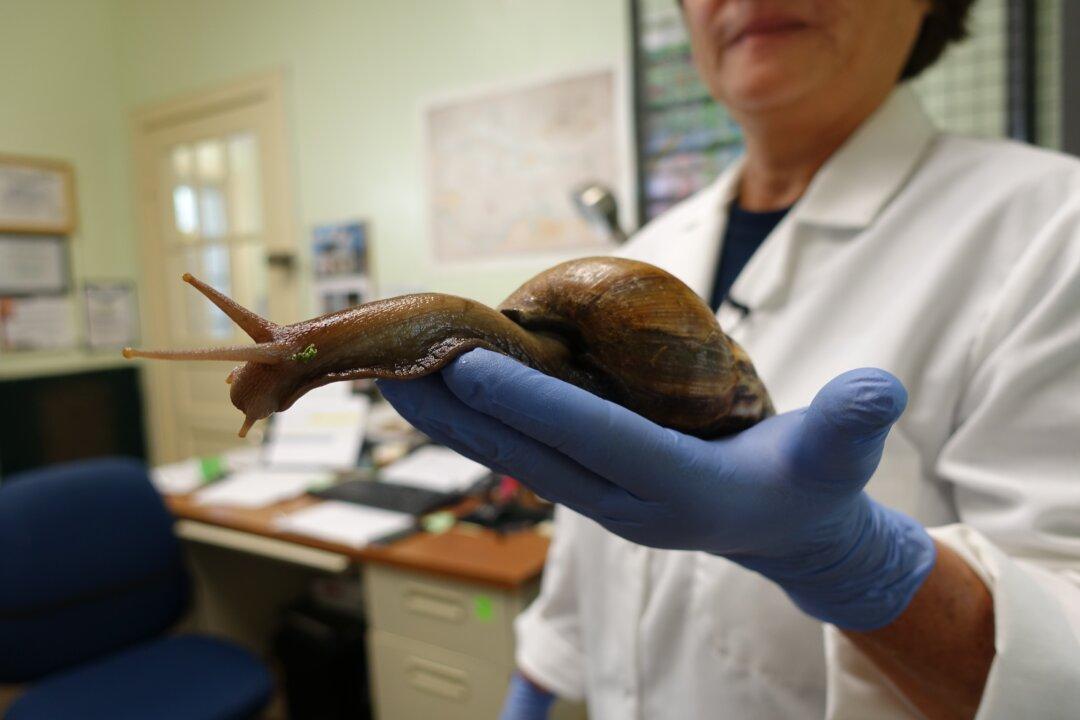PUNTA GORDA, Fla.—Giant African land snails have been detected in Pasco County prompting the Florida Agriculture Commission to issue an agriculture quarantine to protect the public and reduce crop damage.
The invasive snails can wreak havoc on the vegetation and agriculture around the state and cause millions of dollars in damage if not eradicated, officials say.




